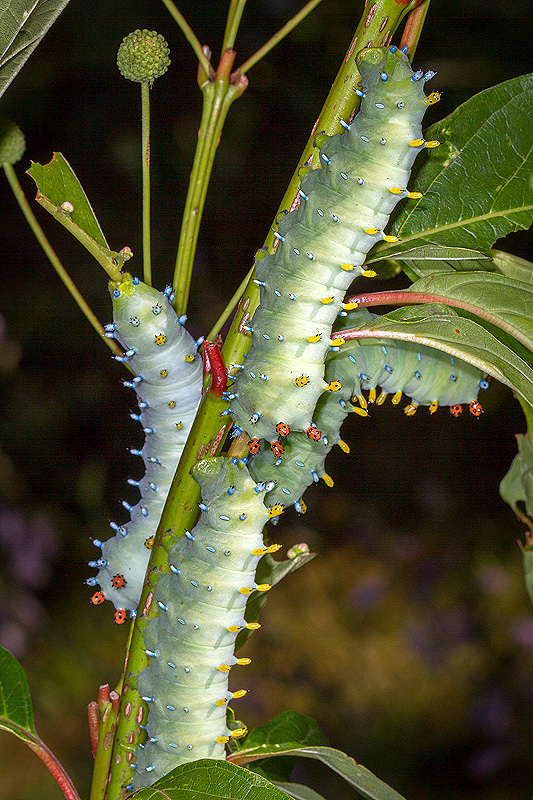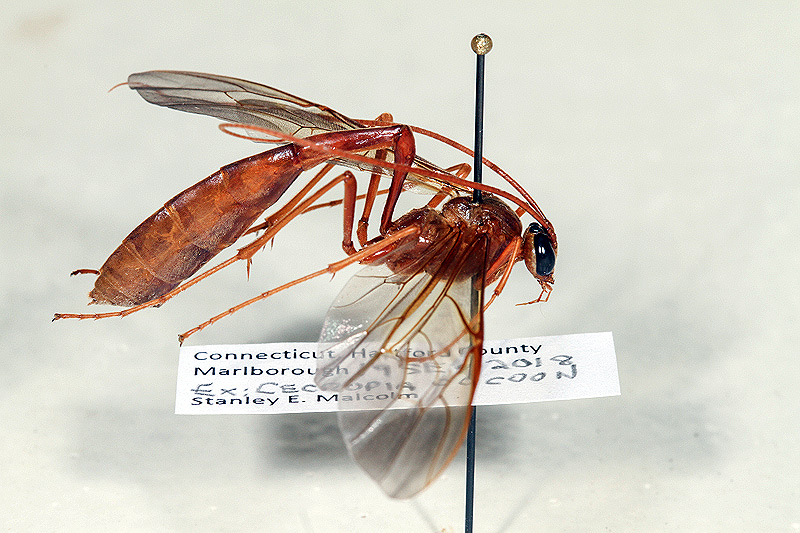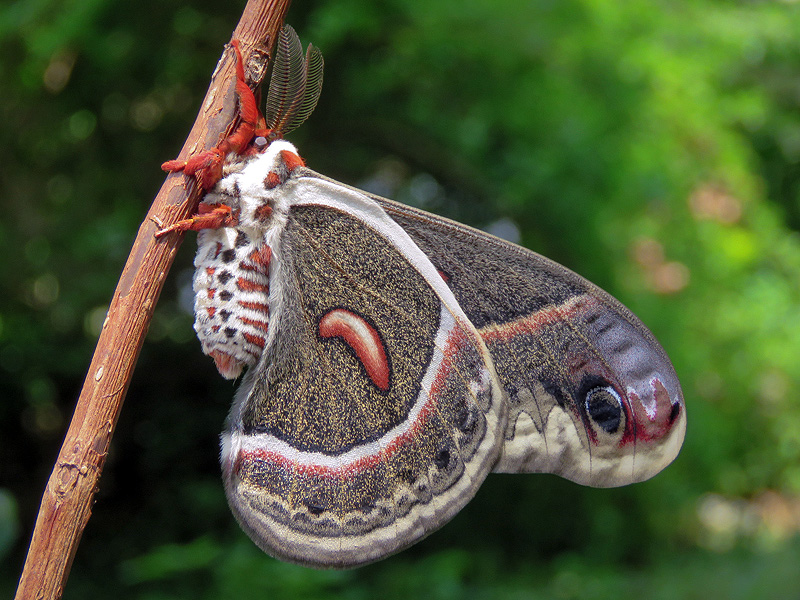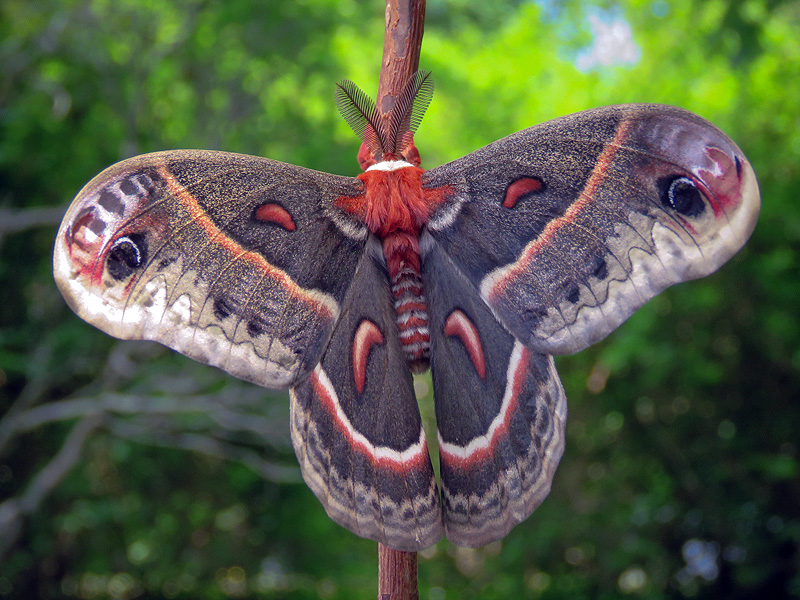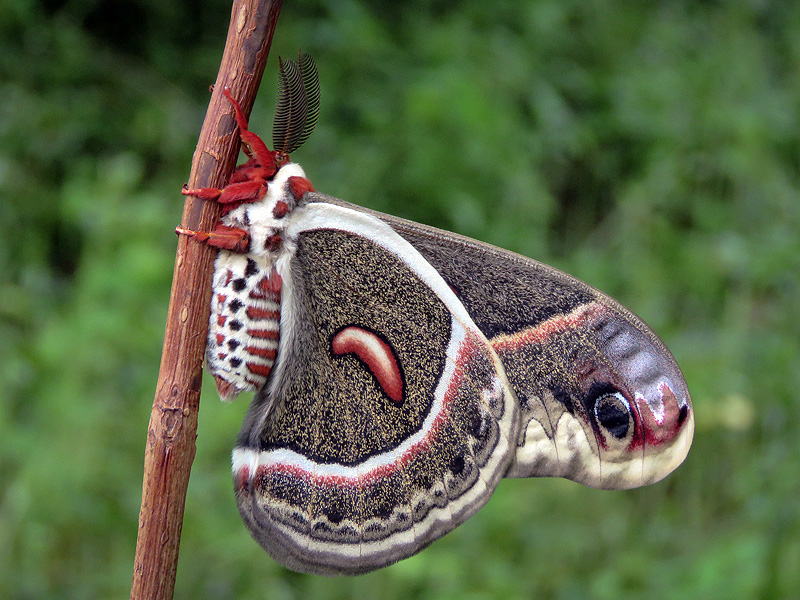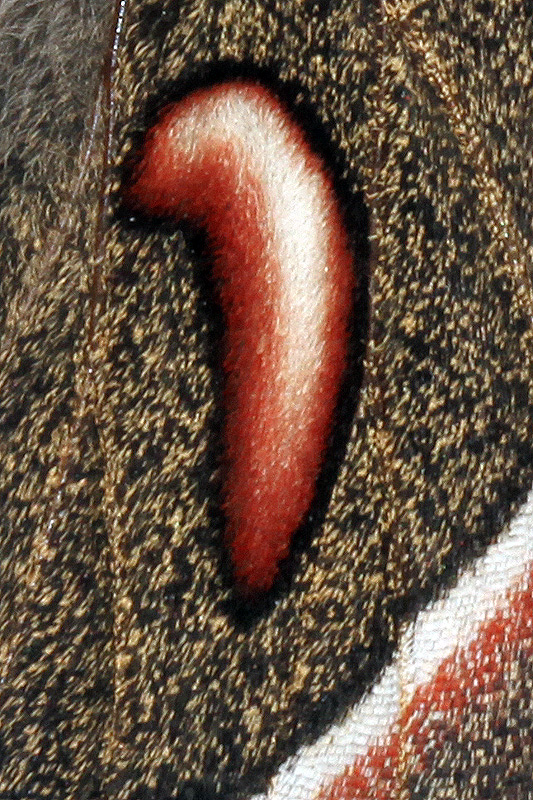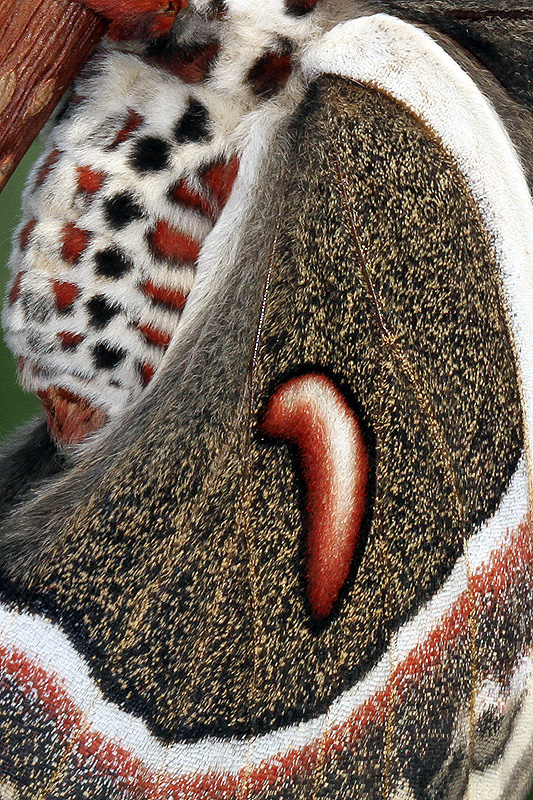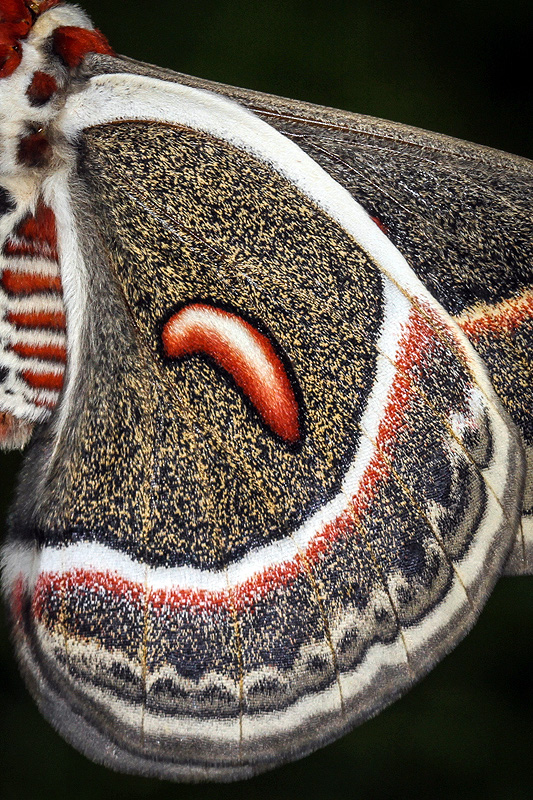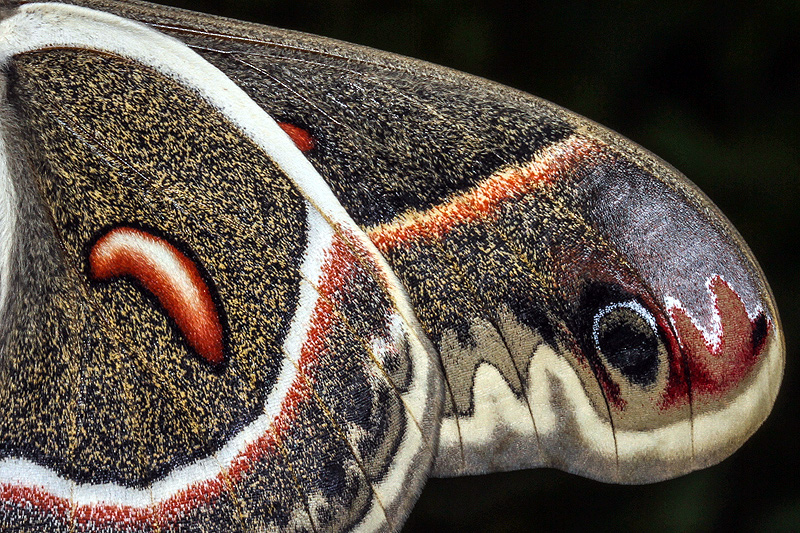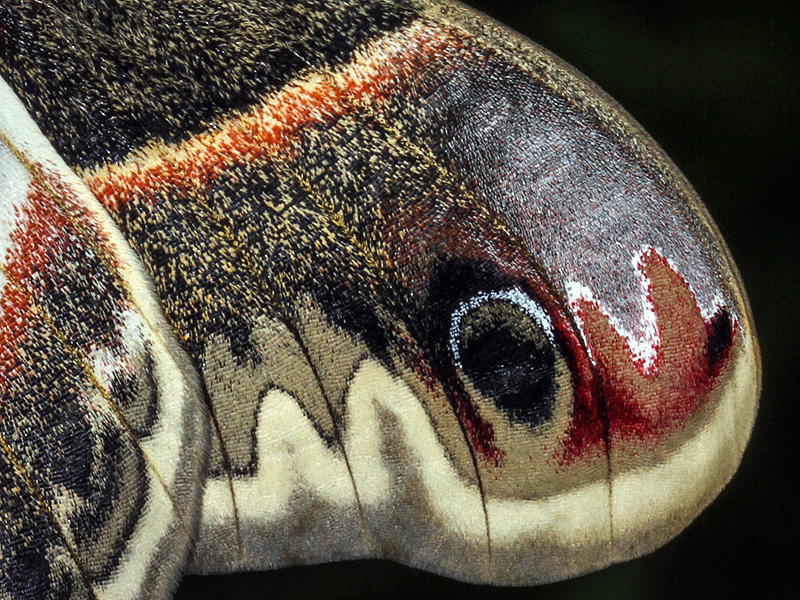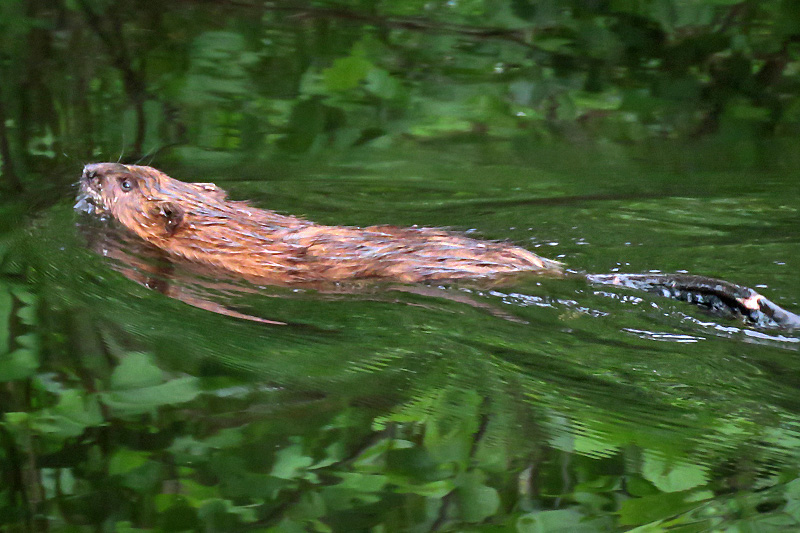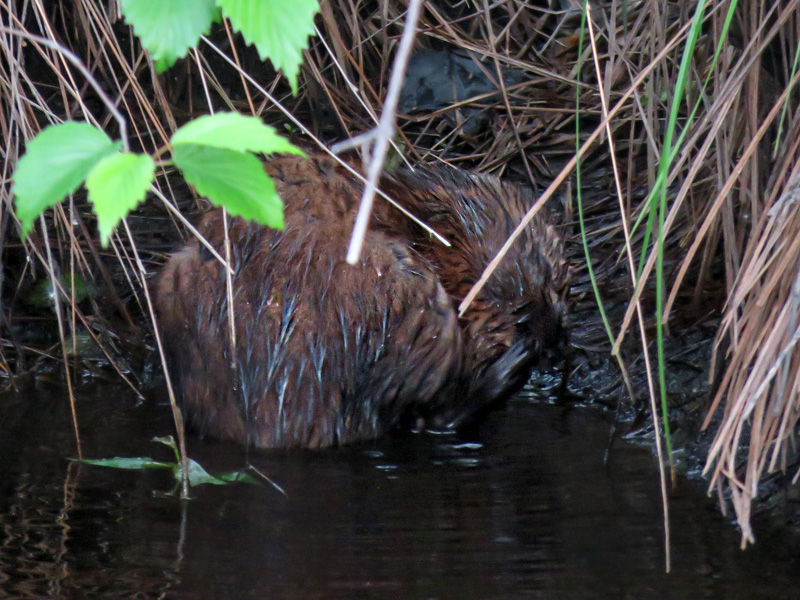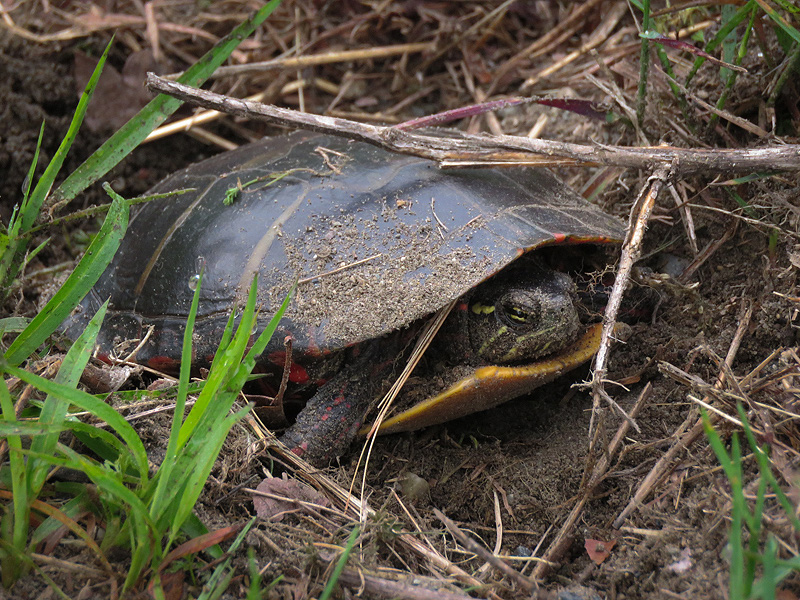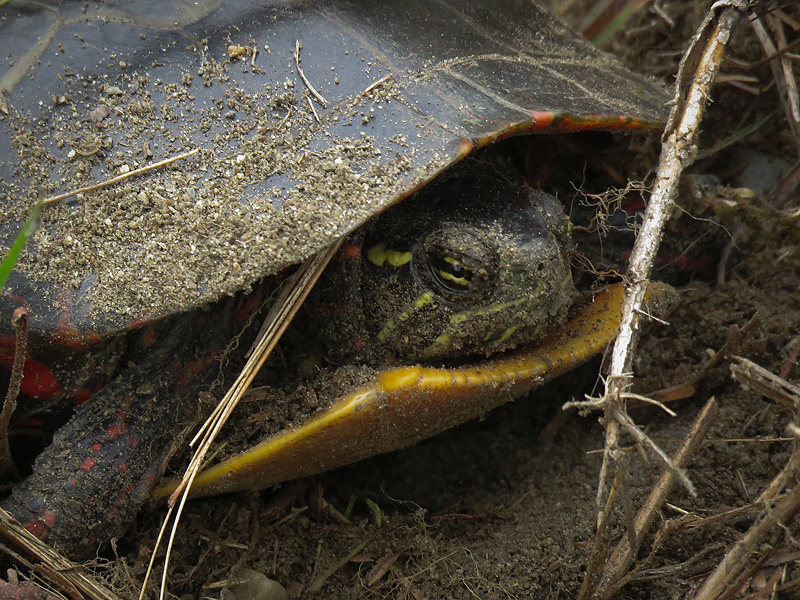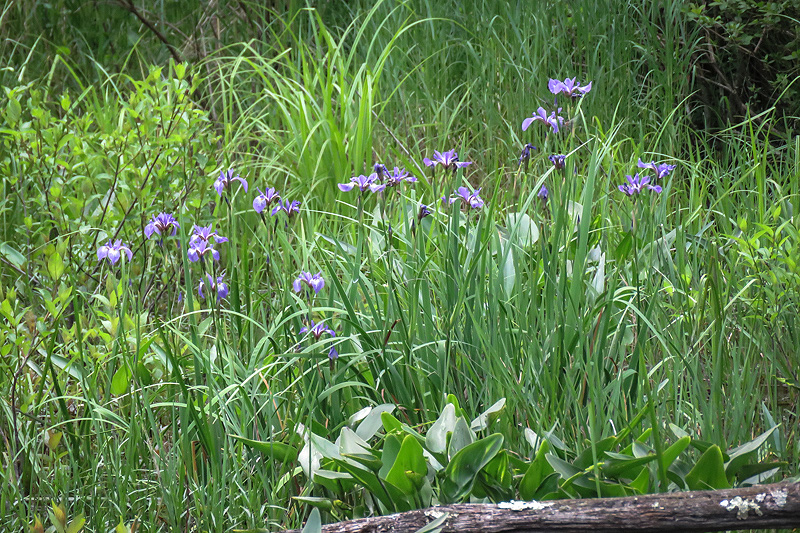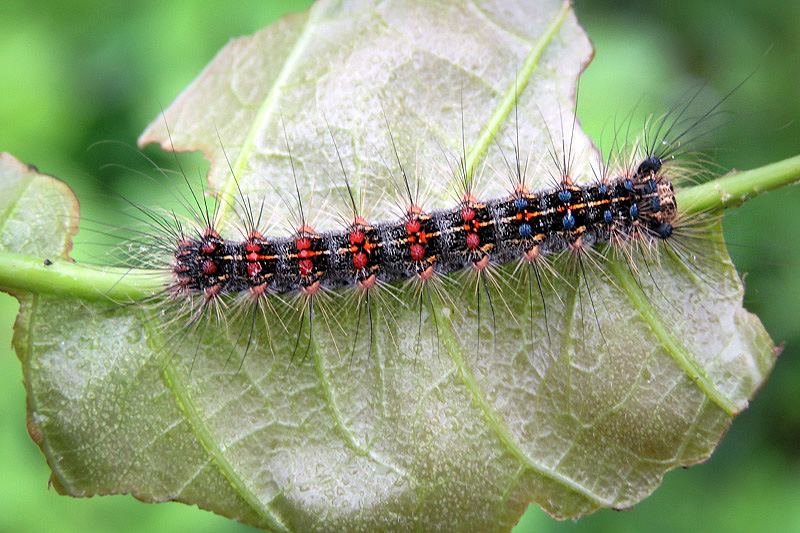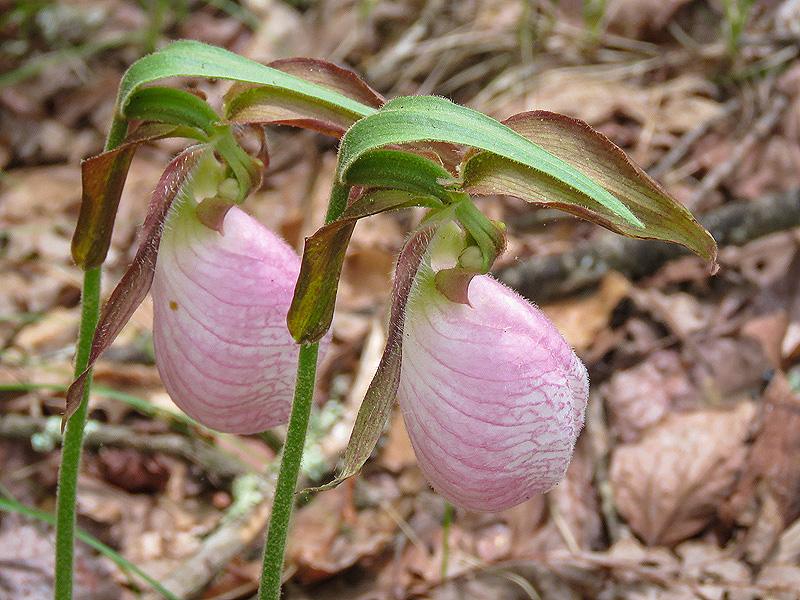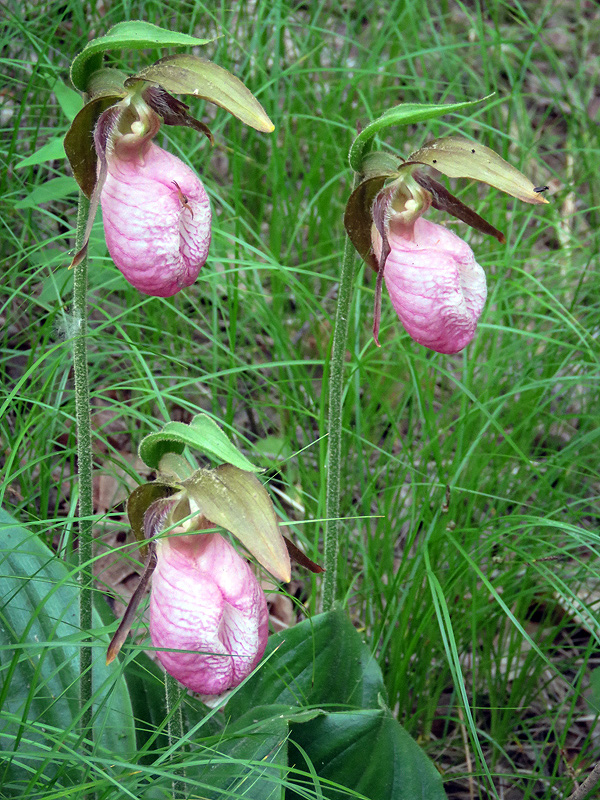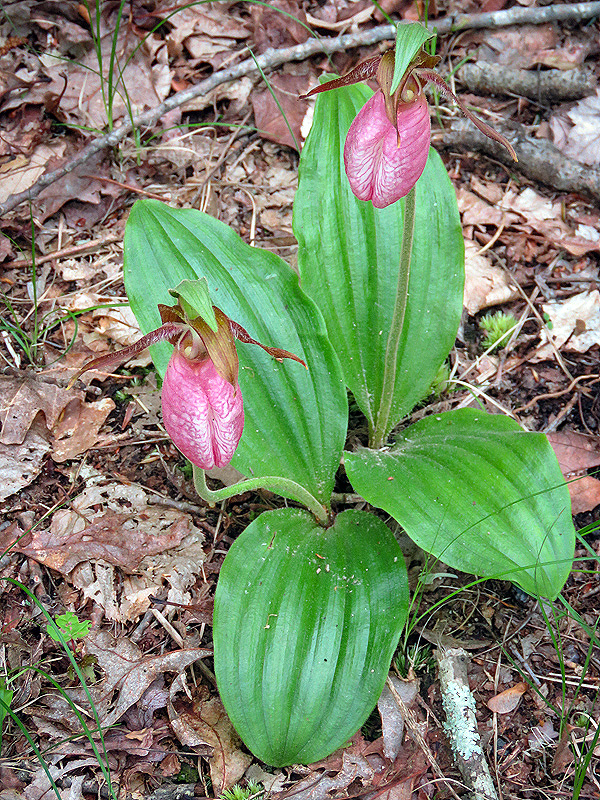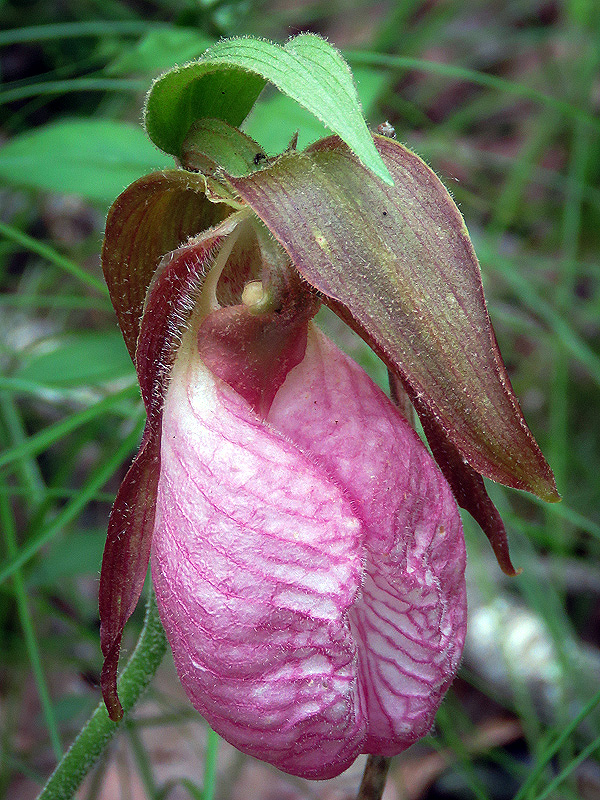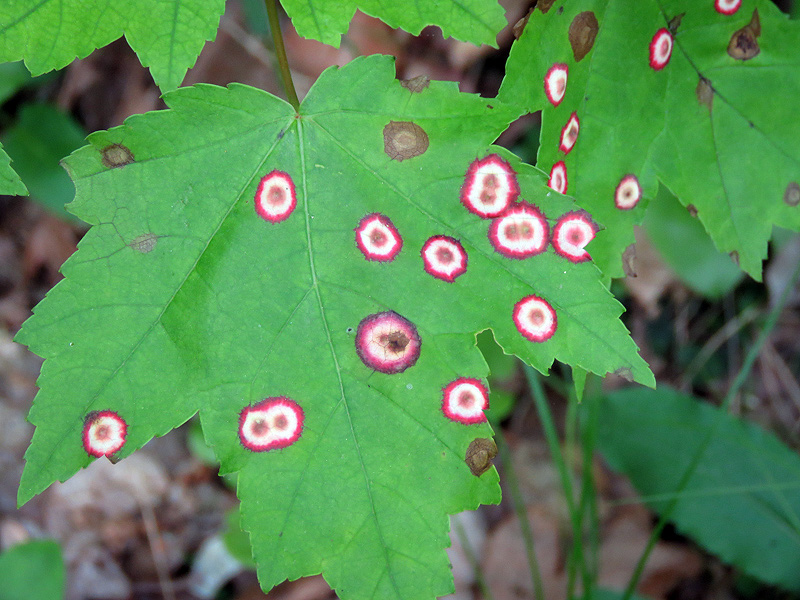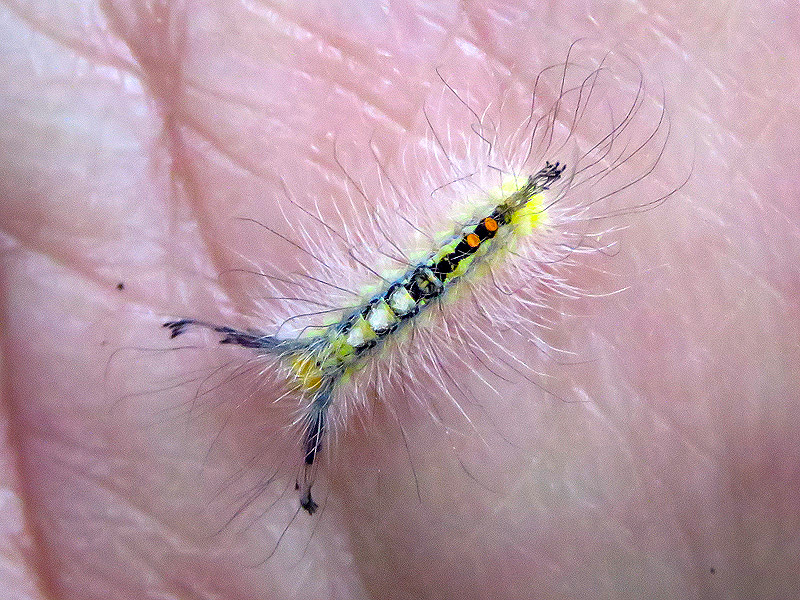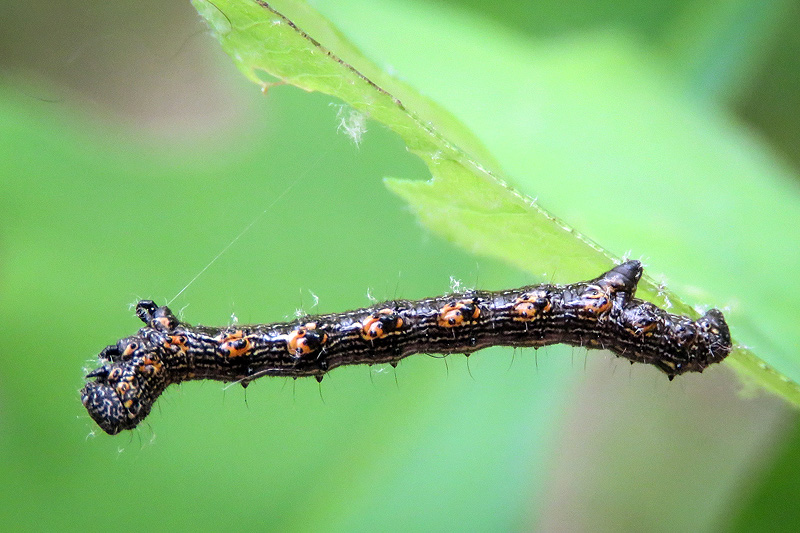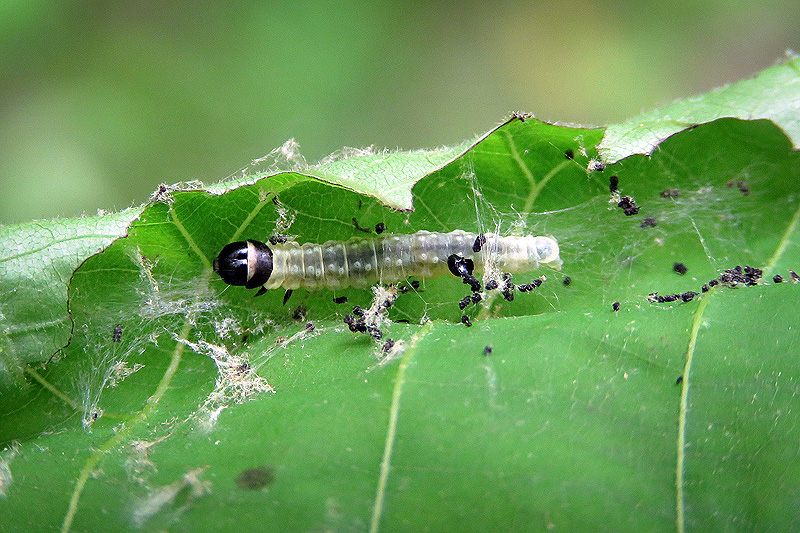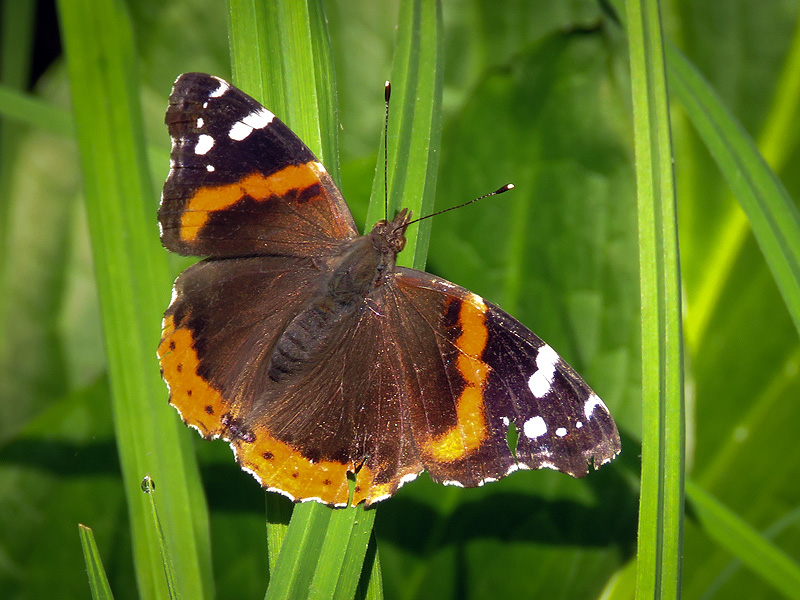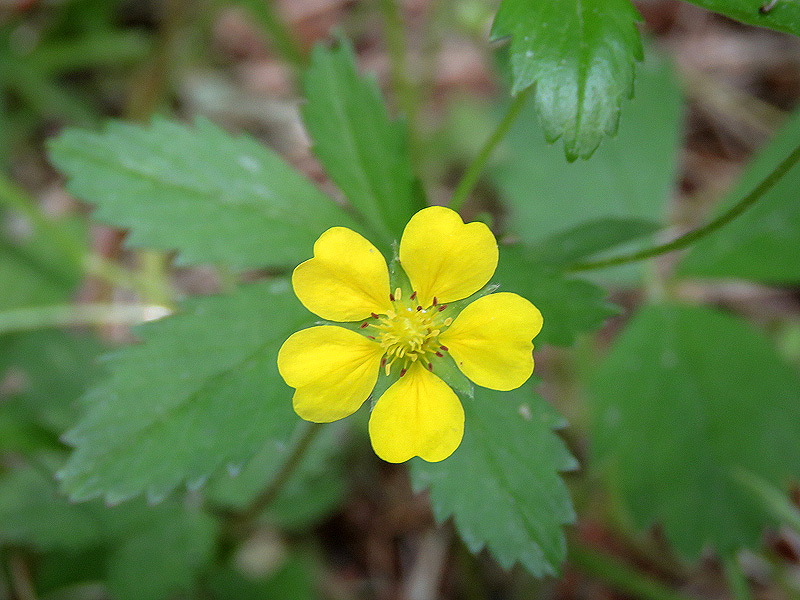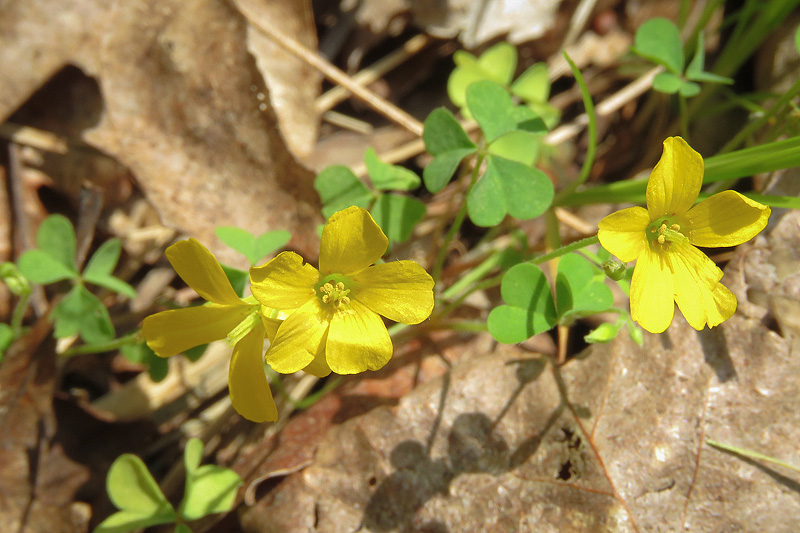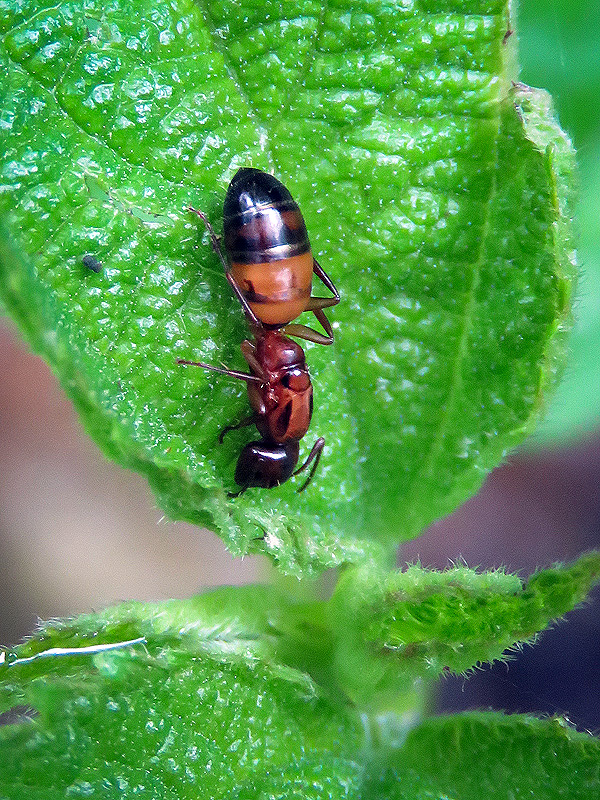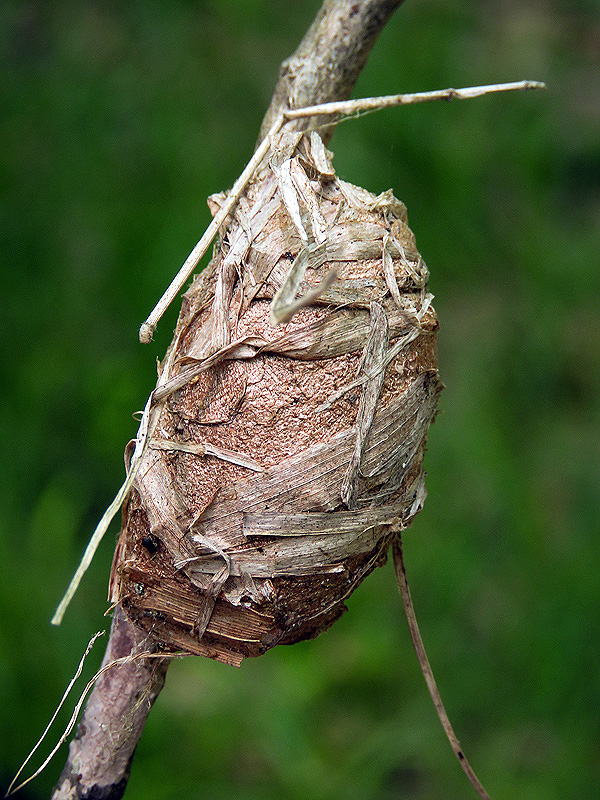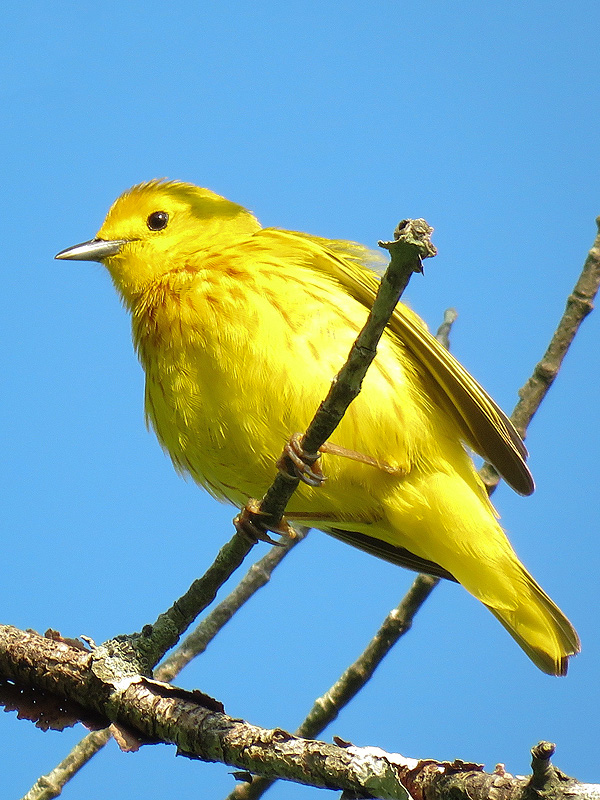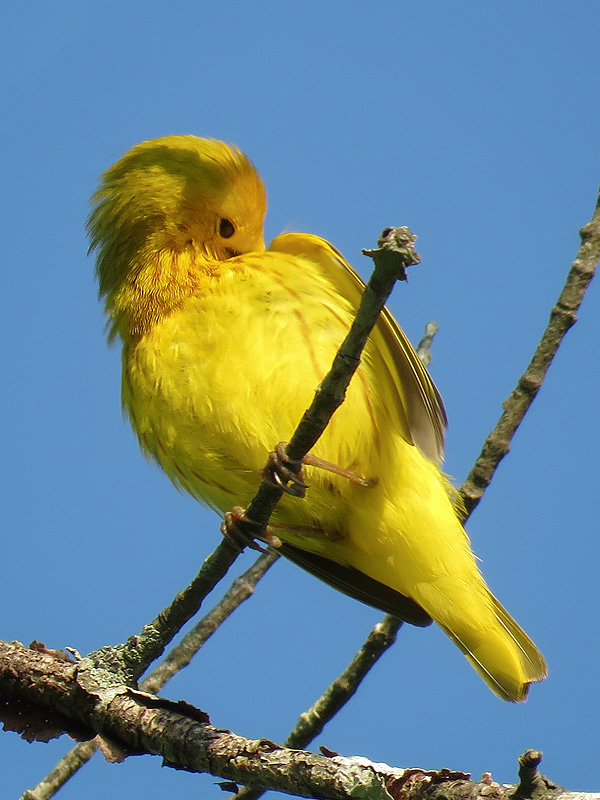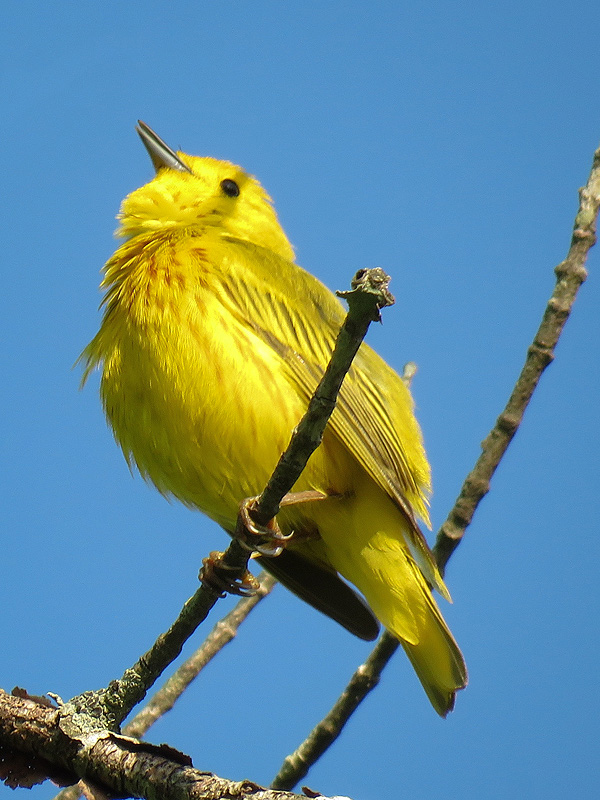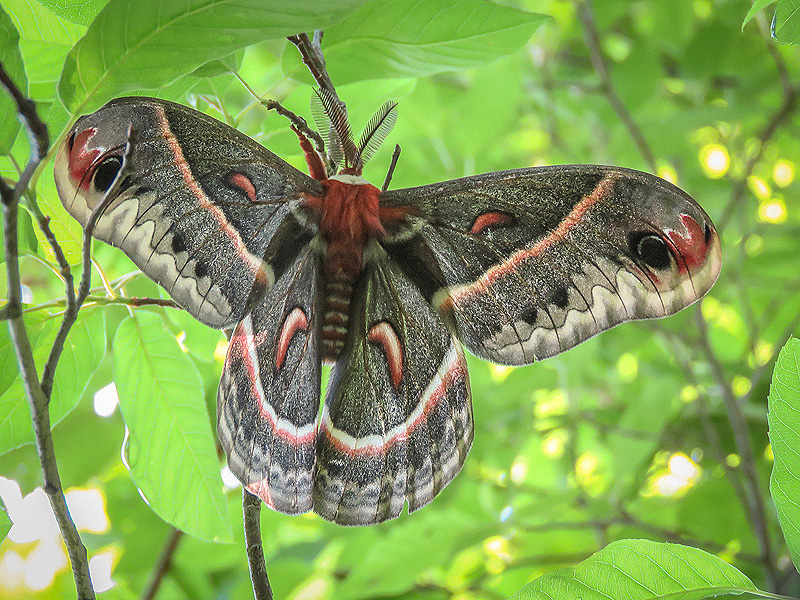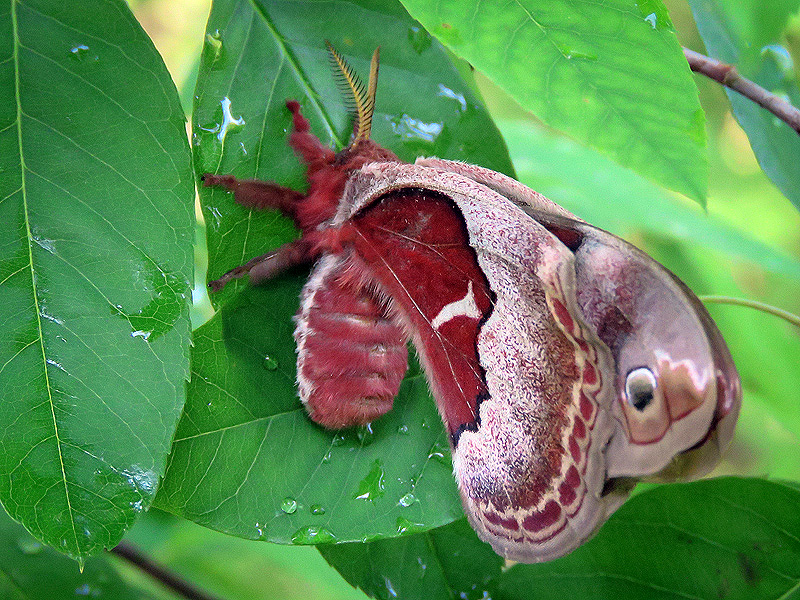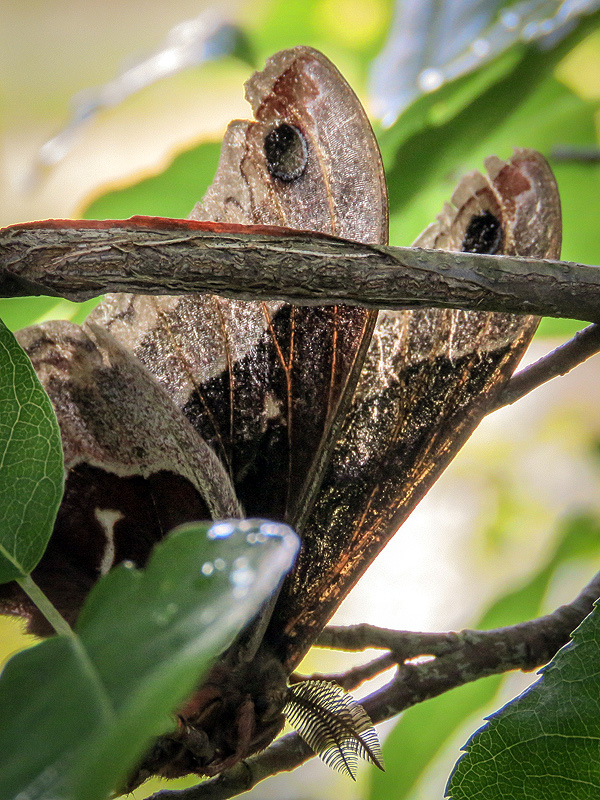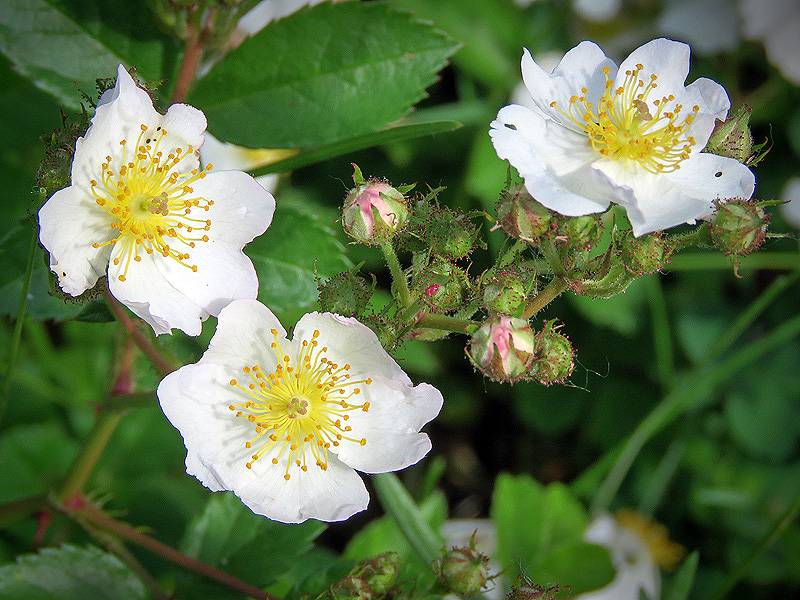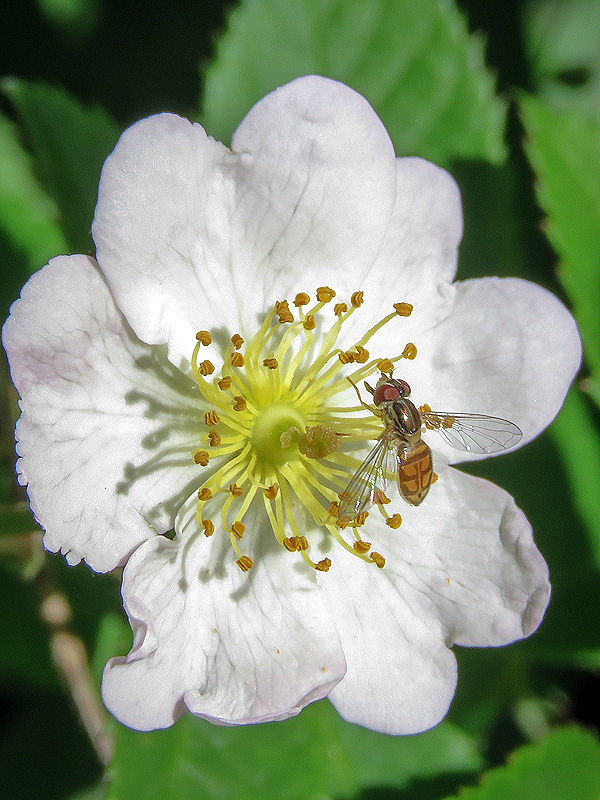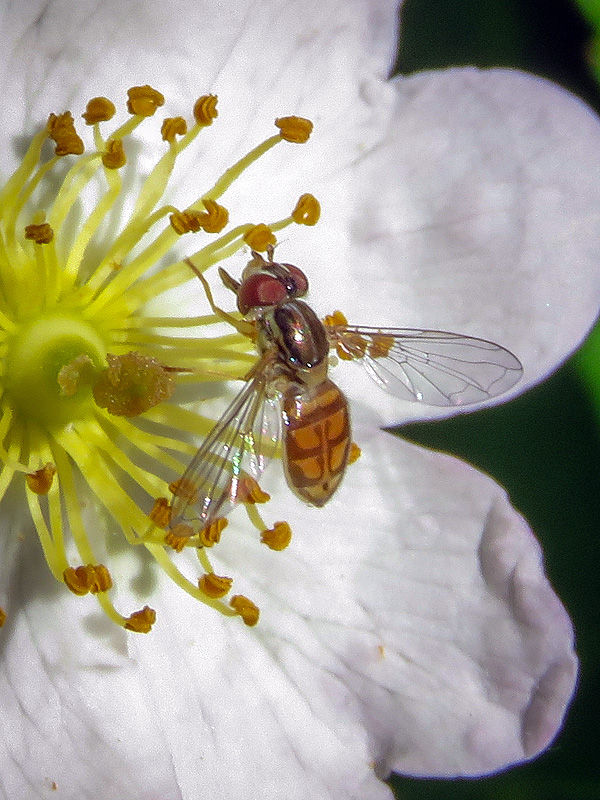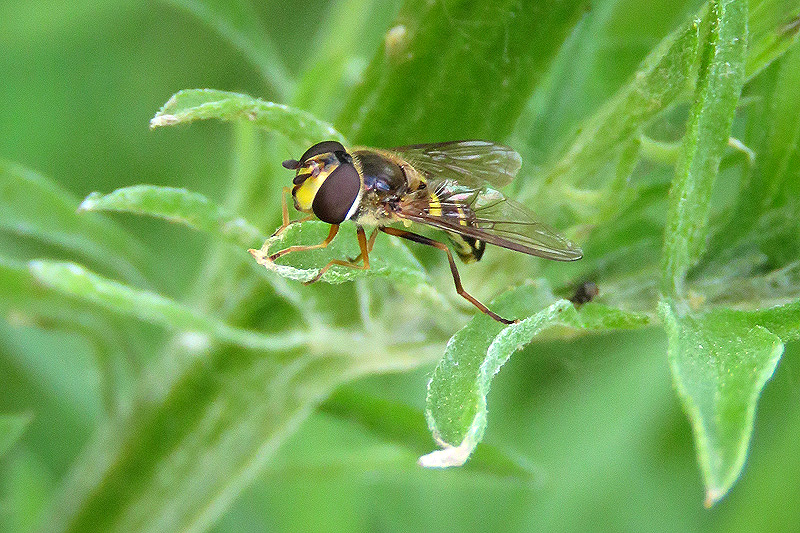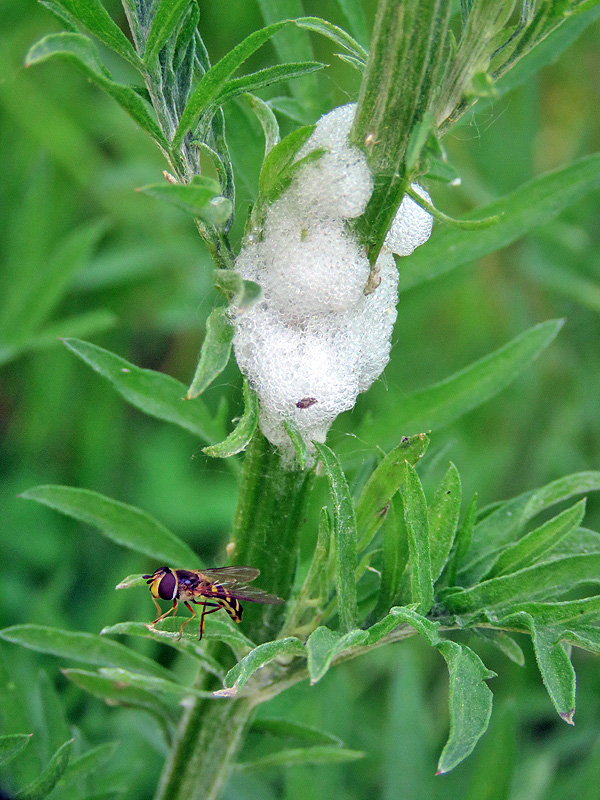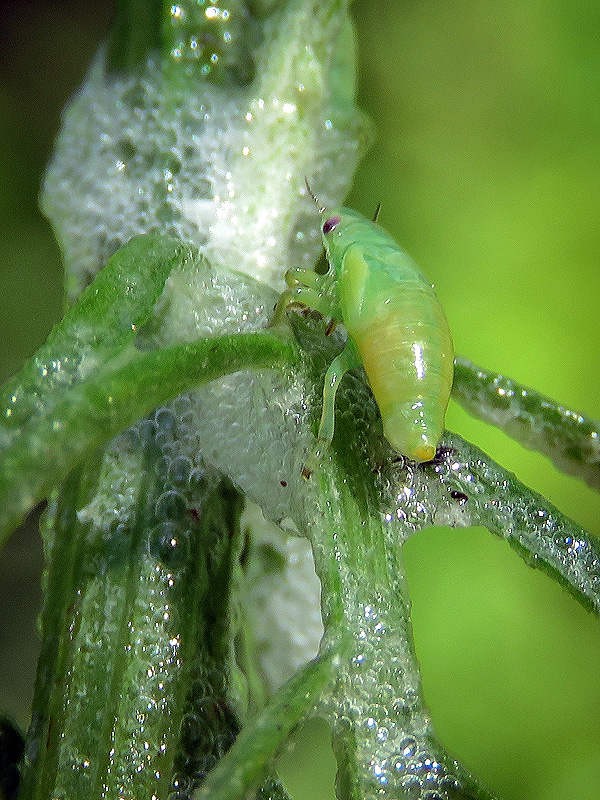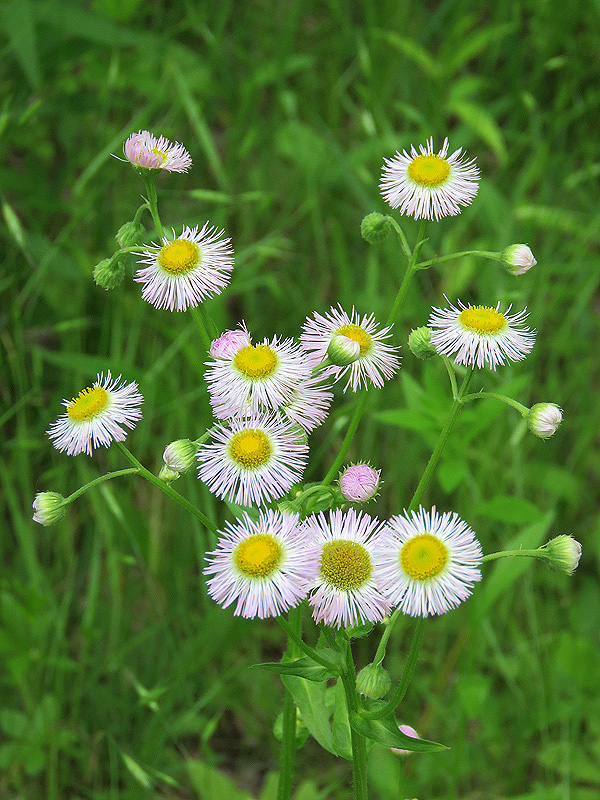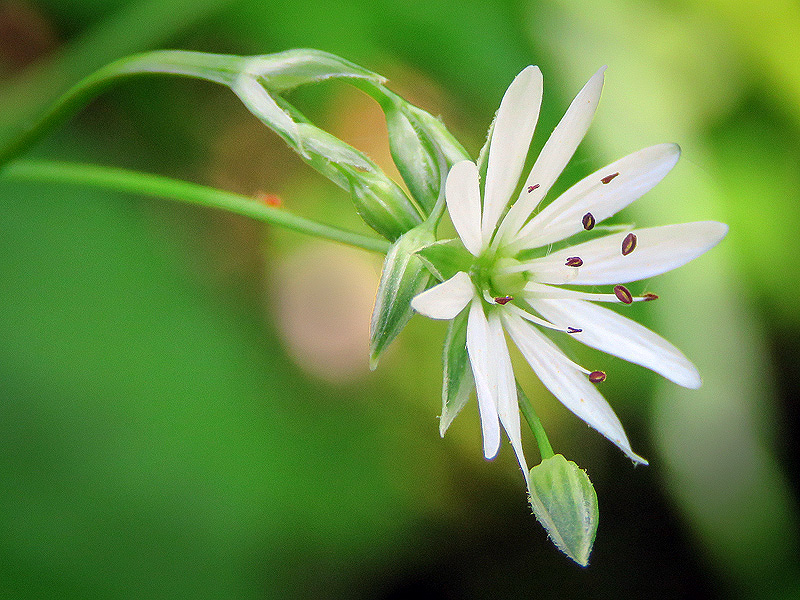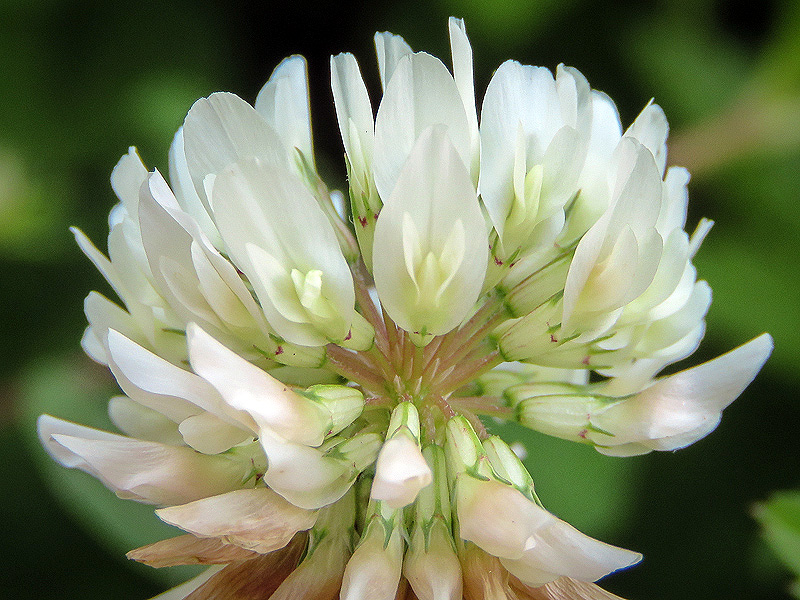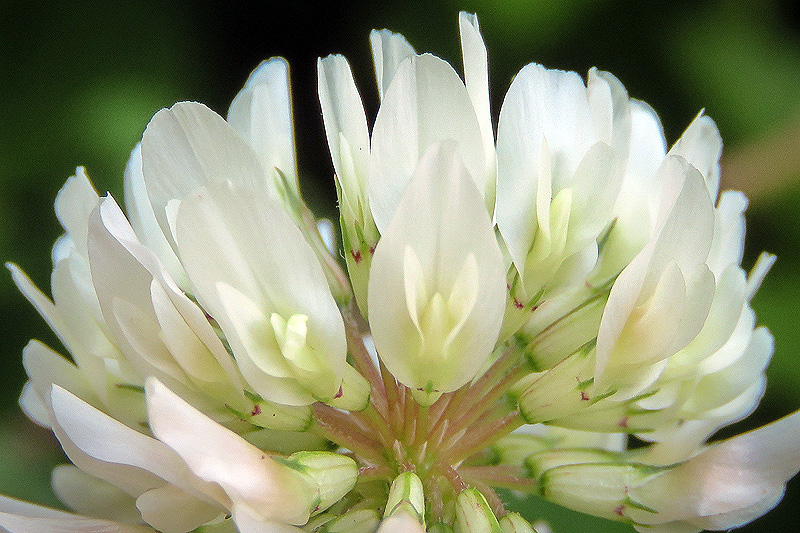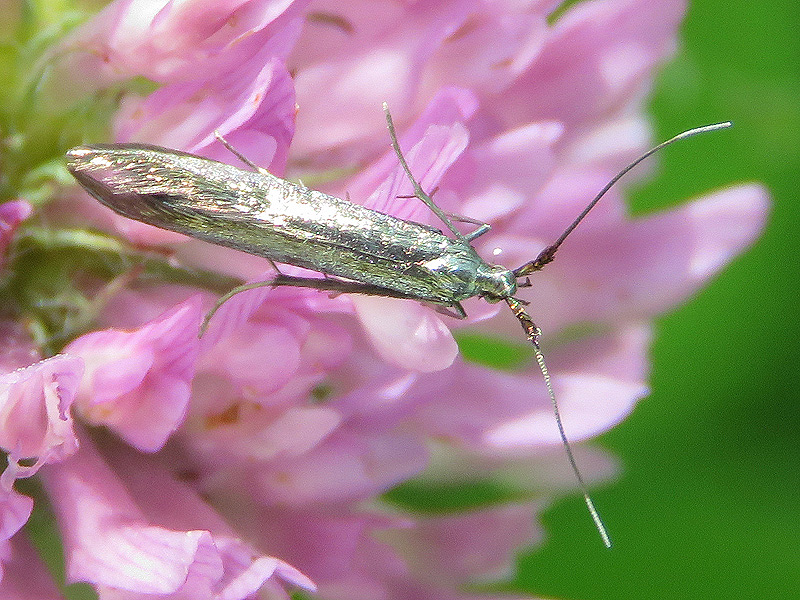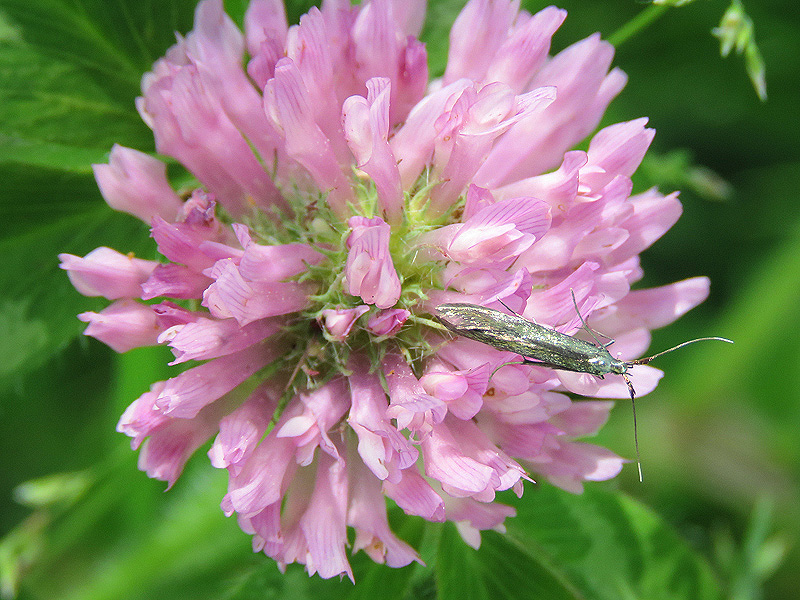Along the Air Line... 2019 - Spring, Part 16 The Air Line Trail in Eastern Connecticut - Stan Malcolm Photos |
HOME: Air Line... 2019 Pages Menu Stan's FlickR Albums |
On July 20th, 2018, I found five Cecropia Moth (Hyalophora cecropia) caterpillars on Buttonbush. All soon spun cocoons. |
On September 19th, 2018, large Ichneumon parasitic wasps emerged from two of the cocoons (one wasp from each cocoon). On opening those cocoons, the Cecropia caterpillars had been completely consumed. |
On May 30th of this year, adult Cecropia moths emerged from two other cocoons. One cocoon still holds what seems to be a viable pupa. |
|
|
|
Some detailed views of the wing scales. |
|
|
|
|
June 2nd. A Common Muskrat (Ondatra zibethicus) in the channel of Raymond Brook Marsh. Lousy low-light picture but you can see the rat-like tail versus a Beaver's paddle. |
An even worse picture. The muskrat is grooming his head (at the right) with his foot. |
Painted Turtle (Chrysemys picta) laying eggs. |
|
Plenty of Larger Blue Flag Iris (Iris versicolor). |
Gypsy Moth (Lymantria dispar) caterpillars are showing their true colors. Blue tubercles are at the head end. |
Late morning walk east from Old Hartford Road for another "photo op" of the Pink Lady's-slipper Orchids (Cypripedium acaule) nearJudd Brook. |
|
|
|
|
Maple Eyespot Galls, made by an Ocellate Gall Midge, (Family Cecidomyiidae, Acericecis ocellaris). |
Early instar caterpillar of the White-marked Tussock Moth (Orgyia leucostigma). |
"Inchworm" caterpillar of The Half-wing moth (Family Geometridae, Phigalia titea). At the left, note the single strand of silk that supports the body as it leans away from (in this case) an oak leaf. Much more cryptic when leaning away from a twig. |
A leafroller caterpillar (most likely Family Tortricidae). I've peeled back the rolled leaf to show the caterpillar in its protective chamber. |
Red Admiral (Vanessa atalanta). Each year, these migrate up from the South, then have a generation or two here. |
Common Cinquefoil (Potentilla simplex). |
Wood-sorrell (Oxalis sp.) |
I don't recognise this Ant (Family Formicidae.) |
Judging by the size and weight, most likely a Polyphemus Moth (Antheraea polyphemus) cocoon. Less likely, a Luna Moth. Will see what emerges from it. |
June 3rd. Yellow Warbler (Dendroica petechia). |
|
|
Release time for the first of the Cecropia Moths (Hyalophora cecropia) that emerged recently. Hopefully, it will find a mate in the wild. |
This female Promethea Moth (Callosamia promethea) emerged several days ago from a cocoon found along the trail just recently. |
She attracted several males and mated with this one. Now both have been released near where I found the cocoon. |
After several hours sorting Hydrophilid beetles in the UConn collection, I walked the trail east of Cook Hill Road. Multiflora Roses (Rosa multiflora) have begun to bloom. |
|
Visited by a Flower Fly (Family Syrphidae, Toxomerus sp., probably T. marginatus). |
|
Another Flower Fly. Not enough information for a reliable identification. |
The same fly, perched below a froth sometimes referred to as "Snake spit". |
In the froth, you'll find the nymph of a Meadow Spittlebug (Philaenus spumarius). The bug feeds on plant juices, extracting what nutrients it can from it, expelling the depleted sap through their anus, and whipping air into it. The froth conceals the bug from predators and parasditoids, and also prevents dessication. |
Daisy Fleabane (Erigeron annuus). |
Lesser Stitchwort (Stellaria graminea), a Chickweed. |
White Clover (Trifolium repens). |
|
A chrome-plated moth. How cool is that! It's a Casebearer Moth (Coleophora sp.)... |
...on Red Clover (Trifolium pratense). |
